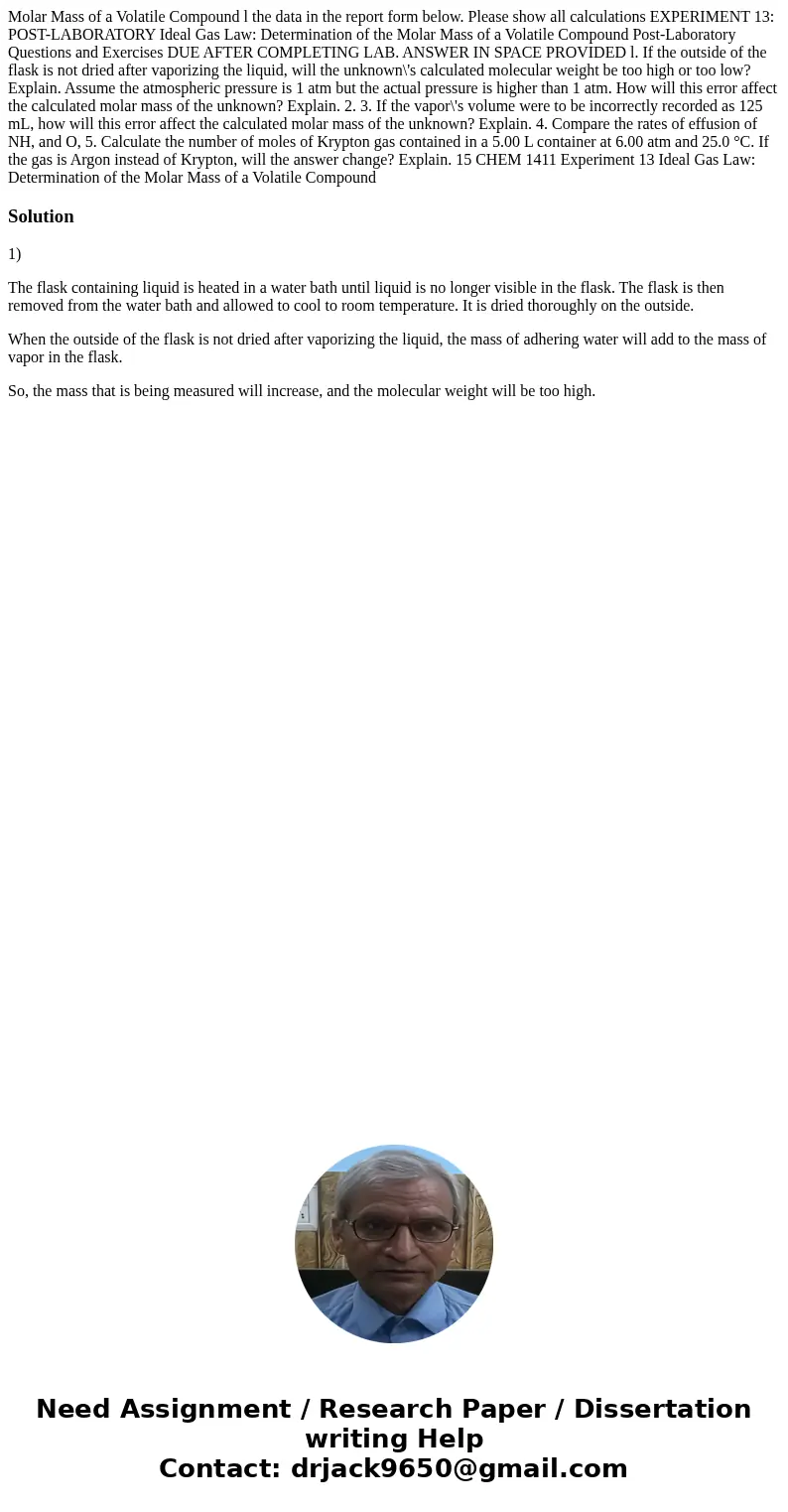Molar Mass of a Volatile Compound l the data in the report f
Molar Mass of a Volatile Compound l the data in the report form below. Please show all calculations EXPERIMENT 13: POST-LABORATORY Ideal Gas Law: Determination of the Molar Mass of a Volatile Compound Post-Laboratory Questions and Exercises DUE AFTER COMPLETING LAB. ANSWER IN SPACE PROVIDED l. If the outside of the flask is not dried after vaporizing the liquid, will the unknown\'s calculated molecular weight be too high or too low? Explain. Assume the atmospheric pressure is 1 atm but the actual pressure is higher than 1 atm. How will this error affect the calculated molar mass of the unknown? Explain. 2. 3. If the vapor\'s volume were to be incorrectly recorded as 125 mL, how will this error affect the calculated molar mass of the unknown? Explain. 4. Compare the rates of effusion of NH, and O, 5. Calculate the number of moles of Krypton gas contained in a 5.00 L container at 6.00 atm and 25.0 °C. If the gas is Argon instead of Krypton, will the answer change? Explain. 15 CHEM 1411 Experiment 13 Ideal Gas Law: Determination of the Molar Mass of a Volatile Compound 
Solution
1)
The flask containing liquid is heated in a water bath until liquid is no longer visible in the flask. The flask is then removed from the water bath and allowed to cool to room temperature. It is dried thoroughly on the outside.
When the outside of the flask is not dried after vaporizing the liquid, the mass of adhering water will add to the mass of vapor in the flask.
So, the mass that is being measured will increase, and the molecular weight will be too high.

 Homework Sourse
Homework Sourse